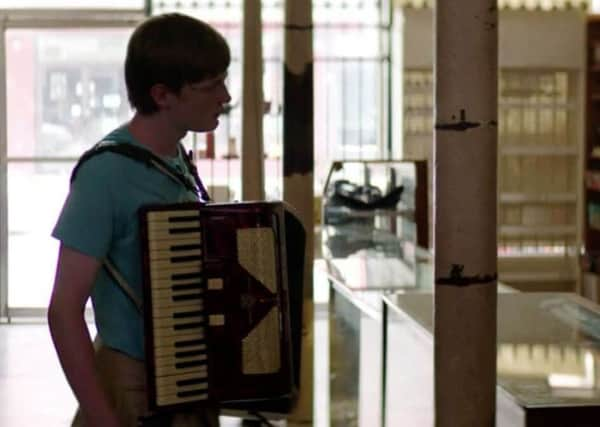Edinburgh Film Festival reviews: Dirt Road to Lafayette | Hal | The Eyes of Orson Welles


Instead this American-set road movie about a Scottish father and son struggling to connect following a death in the family lacks any vibrancy. Receiving its world premiere last night, it stars newcomer Neil Sutcliffe as Murdo, an accordion-playing 17-year-old on a trip with his father, Tom (a typically gruff David O’Hara), to visit family in the Deep South. Murdo hasn’t played music since his mum passed away, but a chance encounter with a local blues legend turns him on to the Louisianan tradition of zydeco and, well, that, sadly, is about it.
This is a film that’s pretty low on dramatic incidents. There’s some friction between Murdo and his dad, whose own grief has blinded him to his son’s talent. But Tom’s unwillingness to let his somewhat feckless son take off on his own to play gigs with the locals is hardly unreasonable and the minor act of rebellion that follows as Murdo starts to assert himself isn’t particularly scintillating. Extended concert scenes briefly enliven proceedings, but ultimately feel like padding for what plays like a stretched-thin short film. What a shame.
Advertisement
Hide AdMaverick filmmakers are the subject of two of the festival’s most interesting and entertaining documentaries. In Hal (***), Amy Scott provides a welcome primer for the work of the late, great Hal Ashby, whose 1970s output – Harold and Maude, Shampoo, The Last Detail, Coming Home – is a straight run of masterpieces on a par with the work of Coppola and Scorsese. In The Eyes of Orson Welles (****), meanwhile, Mark Cousins takes a more abstract approach to his eponymous subject, using a recently uncovered box of Welles’s sketches and paintings to explore his life, work and politics.
Of the two films, the latter is the more formalistically daring, with Cousins building on the artful cine essay format he’s been developing since The Story of Film to provide a much more illuminating insight into Welles’s life and creative process. Hal uses a more traditional talking-head format, but it still makes a forceful case for Ashby’s canonisation as the most radical and anti-authoritarian figure of the whole Easy Riders/Raging Bulls era.